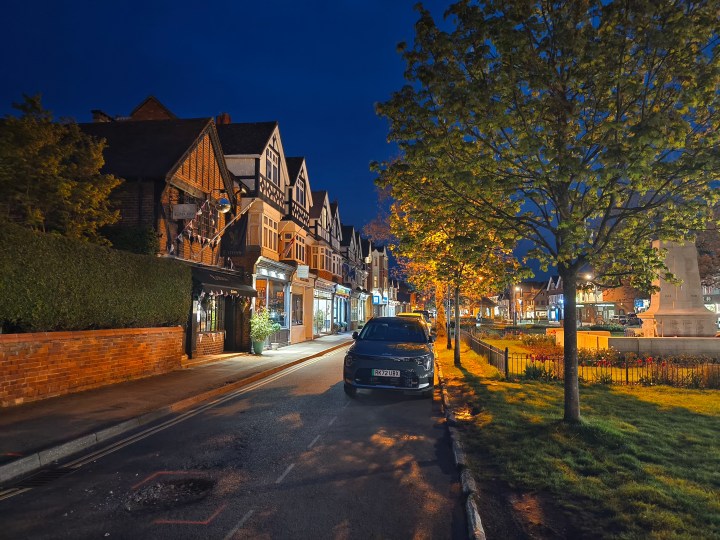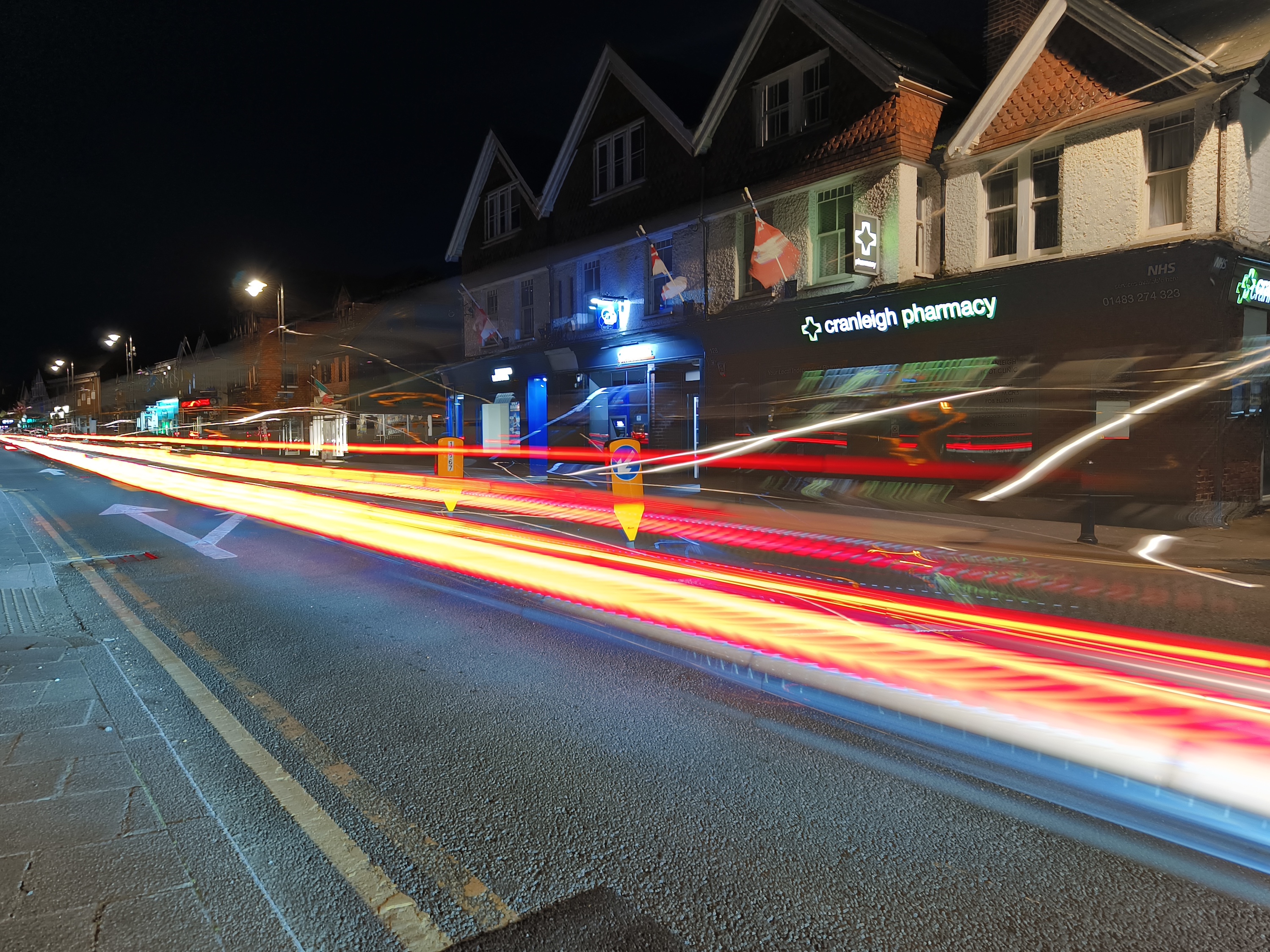Leica and Zeiss are two of the most established and respected names in photography, despite being best-known for different products. Leica is famous for its cameras, while Zeiss has made its name with optics. Over the past years, the pair have collaborated with different smartphone manufacturers to improve the camera systems.
Now, in a twist of fate, both have put their names on phones with massive Sony IMX989 1-inch sensors, which are still a rarity in the industry. It sets the scene for a comprehensive camera test to see which brand currently leads in the phone world.
What phones are we using?

Leica is currently working with Xiaomi and has recently announced the Xiaomi 13 Ultra, which follows the already impressive Xiaomi 13 Pro. Zeiss has partnered with Vivo, and the most recent release from the pair is the Vivo X90 Pro. You won’t find either phone in U.S. stores, but they’re available to buy internationally.
The Xiaomi 13 Ultra’s main camera is a 50-megapixel Sony IMX989 1-inch sensor with a variable physical aperture, where you can switch between f/1.9 and f/4.0 manually. The camera is equipped with optical image stabilization (OIS) and is joined by a 50MP wide-angle camera, a 50MP 3.2x telephoto camera, and a 50MP 5x telephoto camera. Leica has worked on the lenses, tuned the performance, and provided a variety of filters and settings.

The Vivo X90 Pro also uses Sony’s IMX989 1-inch 50MP main camera with OIS, but with Zeiss’s optics and coatings, plus the company’s image quality tuning and various modes. It’s not quite as well-equipped otherwise, though, with a 50MP 2x telephoto camera with OIS and a 12MP wide-angle camera. It does not share the physical variable aperture feature either.
There’s another major difference between them. A Qualcomm Snapdragon 8 Gen 2 processor powers the Xiaomi 13 Ultra, while the Vivo X90 Pro uses the MediaTek Dimensity 9200 processor. This will inevitably change the way photos look and the way the cameras work on the phone.
Main camera
Because they both use the same main camera sensor, there are a lot of similarities between the Vivo X90 Pro and the Xiaomi 13 Ultra, and there’s no doubt both take brilliant photos. Experimenting with the incredible depth-of-field possible from both is a lot of fun, and you really can get a natural effect that’s simply not possible with other phones. However, you need to be an experienced, knowledgeable photographer to get the most from Xiaomi’s variable aperture. Many may not use the feature at all and still be satisfied with the auto setting that we’ve used throughout our test.
- 1. Xiaomi 13 Ultra
- 2. Vivo X90 Pro
Our first photo is a good demonstration of the differences between the cameras regarding color accuracy and focus. Xiaomi’s photo has more accurate focus and edge recognition than the Vivo phone, despite this not being taken with Portrait mode, and it better understands the cake and part of the cup should be in focus. The Vivo camera is less sure of where it should focus, and the photo is, therefore, a little less attractive to look at.
- 1. Xiaomi 13 Ultra
- 2. Vivo X90 Pro
The second photo is of a particularly small and delicate flower. I tapped it in the viewfinder to ensure the camera knew what I wanted, but the Xiaomi 13 Ultra was better at keeping it in focus than the Vivo X90 Pro. In general, the Vivo phone isn’t as keen to shoot close-up objects, and it’s also worth noting that I had deactivated Xiaomi’s auto macro mode. However, Xiaomi’s photo does have a slightly fake look to it, and the colors are not as natural either.
- 1. Xiaomi 13 Ultra
- 2. Vivo X90 Pro
On the subject of colors, the photo of the car’s red interior shows where Xiaomi goes overboard with saturation, while the Vivo keeps things more in check to produce a natural image. The natural tone continues with the black center console and shadows too, with the Vivo camera taking a much better image all-around.
- 1. Xiaomi 13 Ultra
- 2. Vivo X90 Pro
The Xiaomi 13 Ultra has trouble with colors elsewhere, too as the car in the above photos is black, not blue. There’s a big variation between the two cameras here, with the Vivo X90 Pro getting the color balance and accuracy exactly right and the Xiaomi 13 Ultra failing quite badly. This image also shows the incredible depth of field possible with both cameras.
- 1. Xiaomi 13 Ultra
- 2. Vivo X90 Pro
The toned-down colors don’t always work in the Vivo X90 Pro’s favor, as this image of beach huts shows. It was an overcast, windy day, but the Xiaomi 13 Ultra still manages to portray the scene in an attractive, enticing way, while the X90 Pro’s photo is a little washed-out and characterless. Realism is great, but not when it makes your photos dull.
- 1. Xiaomi 13 Ultra
- 2. Vivo X90 Pro
What about a sunny day? I really like the photos from both cameras, and as we’ve already seen, the Xiaomi 13 Ultra is a fan of saturated colors, while the Vivo X90 Pro leans toward a more natural look. Both do show some noise in the sky and clouds, but it’s only noticeable when you zoom in. I’d be pleased to share either image.
- 1. Xiaomi 13 Ultra
- 2. Vivo X90 Pro
Our final photo shows why it’s very hard to choose a winner here. In the Vivo X90 Pro’s photo of the chalkboard, there are masses of texture and a lot more detail in the writing and hand-drawn art, which is repeated on the ground, but it’s all oddly smooth and artificial in Xiaomi’s photo. Yet the Vivo phone introduces more noise into the blurred background, and Xiaomi’s colors are more attractive. Both succeed and fail in different photos, and there are strengths and weaknesses on both sides — resulting in a draw.
Winner: Draw
Wide-angle camera
The Vivo X90 Pro’s 12MP wide-angle camera has a fairly tight 108-degree field of view, which is very noticeable when placed alongside the Xiaomi 13 Ultra’s 50MP wide-angle with a 122-degree field of view. You can see the difference it makes in the first photo of the beach huts below, but also note there really isn’t much difference in detail despite the megapixel counts.
- 1. Xiaomi 13 Ultra
- 2. Vivo X90 Pro
You’ll also spot the biggest difference between the two cameras — the way both deal with exposure, white balance, and color. The Xiaomi 13 Ultra’s obviously wide-angle shot is dull in comparison, with the Vivo X90 Pro taking a tighter and less distorted image that’s also happier and brighter. Zoom in, and Vivo’s photo is sharper too.
While the Vivo X90 Pro’s tighter field of view does mean vistas will be less spatially impressive than photos taken with the Xiaomi 13 Ultra, it does make the camera more usable in more situations. The church gets a little lost in Xiaomi’s photo here, while it’s clearly the focal point in the Vivo X90 Pro’s image. And it still takes in more of the surroundings than a photo taken with the main camera.
- 1. Xiaomi 13 Ultra
- 2. Vivo X90 Pro
Again, Vivo’s better colors and white balance help make the photo far more attractive and eye-catching — there’s just as much detail, and the surroundings are sharper. Edge enhancement is more noticeable in Vivo’s photo, though, especially on the spire. However, in all other aspects, the X90 Pro beats the Xiaomi 13 Ultra here.
Winner: Vivo X90 Pro
Telephoto cameras
It’s unfair to directly compare the telephoto cameras, as both have very different specifications, but the category is still going to be a draw. Xiaomi makes the mistake of putting a 2x shortcut in its camera app along with the 3.2x and 5x optical zoom modes, but the 2x quality is poor compared to the Vivo X90 Pro’s 2x mode. The thing is, Vivo doesn’t then add more shortcuts to lower-quality zoom settings, so there’s no temptation to take photos that look bad.
- 1. Xiaomi 13 Ultra
- 2. Vivo X90 Pro
The Vivo X90 Pro’s 2x zoom isn’t just better than the Xiaomi 13 Ultra’s 2x, it’s really good overall. Like the rest of the camera, there’s a lovely bright, colorful tone to its photos, with plenty of detail. The sensor’s size means getting a great depth of field is easy too, and it really can make photos pop.
- 1. Xiaomi 13 Ultra
- 2. Vivo X90 Pro
When you switch to the Xiaomi 13 Ultra’s 3.2x and 5x modes, the tables are turned. Xiaomi’s camera is more versatile due to these modes, but many people will also be satisfied with the basic 2x zoom on the Vivo X90 Pro, especially when it takes photos that look so good. But as you can see from the 5x comparison here, the Vivo phone doesn’t entirely disgrace itself when you do shoot at a greater zoom.
Winner: Draw
Night mode
The cameras take different approaches to lowlight images, and the results are completely different because of it. The Xiaomi 13 Ultra doesn’t brighten images to the extent that they look like they were shot in daylight, but at the same time, it does not enhance the scene to make the image attractive or always representative of the environment.
- 1. Xiaomi 13 Ultra
- 2. Vivo X90 Pro
The first photo of the pond illustrates it really well. It was darker to the naked eye than both these photos show, so neither is an accurate example of real life. But the Vivo X90 Pro’s photo is so much brighter, yet still brings out natural colors and detail in the sky while keeping the streetlights balanced so it looks like an evening photo.
- 1. Xiaomi 13 Ultra
- 2. Vivo X90 Pro
In the second photo of the street, you can again see how the Vivo X90 Pro emphasizes detail without sacrificing atmosphere. The trees and grass have color, and there’s detail in the road surface and signs on the buildings that are invisible in Xiaomi’s image. There’s a lot less noise too. There’s little value in making a lowlight photo look like daytime, and the Vivo never crosses the line.
- 1. Xiaomi 13 Ultra
- 2. Vivo X90 Pro
The final photo was taken in darkness and with very little ambient street light. The Xiaomi 13 Ultra’s photo is blurred, and the software has clearly struggled to cope with the environment. The Vivo X90 Pro’s photo is sharp and clear, with masses of detail in the brickwork and the sign. Both cameras used a two- or three-second exposure to take this image, and it was handheld. It’s an easy win for the MediaTek-powered Vivo X90 Pro and Zeiss in this important category.
Winner: Vivo X90 Pro
Special camera features
There are various different modes to explore in each camera app, including some that have been specifically created by Zeiss and Leica. Leica has the edge over Zeiss when it comes to tuning, with the ability to switch between Leica Vibrant and Leica Authentic looks, which work a little like filters. Zeiss has its Natural Color mode, which was active in all these images, while the Leica camera was in the standard Leica Vibrant mode.
- 1. Xiaomi 13 Ultra “Leica Authentic”
- 2. Vivo X90 Pro “Zeiss Natural Color”
However, when you use Leica Authentic, you can really create some lovely images. Plus, there are the excellent Leica black-and-white filters, which I think are the best you can find on a phone. There are several long exposure modes that are fun and work really well. I took the photos below while resting the phone against a bench, so technically still handheld, and the Vivo makes the task easier with a default four-second shot. The Xiaomi is less intuitive by giving you complete control over the exposure time.
Portrait mode is largely unnecessary because the sensors are large enough to create their own depth of field, and neither camera performs that well when you use it anyway. The results were evenly split down the middle, and where the Xiaomi 13 Ultra succeeded in one image, it failed in the next, and the same with the Vivo X90 Pro. The Xiaomi 13 Ultra will take the win here, though, as Leica adds more value with its filters and tuning, plus the variable aperture mode will add appeal to those keen to experiment or have the experience to use it already.
Winner: Xiaomi 13 Ultra
Selfie camera
The Vivo and Xiaomi selfie cameras are packed with beauty settings, where you really can drastically change the way you look in photos. The effects are quite aggressive, and if that level of adjustment appeals, you’ll be happy with both of these phones. I turned all the enhancements off for the test selfies (sorry about that), and it’s clear which takes the better base images.
- 1. Xiaomi 13 Ultra
- 2. Vivo X90 Pro
While both have good-quality selfie cameras, the Xiaomi 13 Ultra has a little more detail and definitely captures skin tone more effectively. Or at least, I personally prefer the skin tone in Xiaomi’s selfies compared to the lighter tones generated by the Vivo X90 Pro.
Winner: Xiaomi 13 Ultra
It’s a draw between Leica and Zeiss, Xiaomi and Vivo
Our test is really too close to call, with Leica and Xiaomi taking two wins, Zeiss and Vivo also taking two, and two categories endimg in a draw. The Xiaomi 13 Ultra’s main camera takes colorful, vibrant photos that can beat the Vivo X90 Pro, but when it does badly, the Vivo camera produces eye-catching photos — ensuring neither really pulls ahead. The Xiaomi 13 Ultra does have more zoom modes, but the ones on the X90 Pro take really great photos. It’s very difficult to separate the two.
However, the Vivo X90 Pro’s wide-angle camera is excellent, and the Night mode category is the most decisive win for a phone in the battle, with its lowlight photos overflowing with character and atmosphere. The Xiaomi camera, even with Leica’s tuning and the Snapdragon processor, didn’t come close to competing. It does take better selfies, and Leica’s additional filters and tuning, plus the variable aperture, make the camera more fun and versatile.
It’s ultimately a draw between them, but special mention should go to the Sony IMX989 1-inch sensor the two cameras share. It can take some glorious shots, and the natural depth of field can be truly stunning. I hope to see it on more phones in the future, because no matter how you slice it, these are two of the best camera phones available today.
Editors' Recommendations
- Nomad’s new iPhone case and Apple Watch band may be its coolest yet
- This is our best look yet at the iPhone 16’s big design changes
- 5 phones you should buy instead of the iPhone 15 Pro Max
- I said I wouldn’t do this to my iPhone, but did it anyway
- A phone you haven’t heard of just beat the Galaxy S24 Ultra in a camera test











































